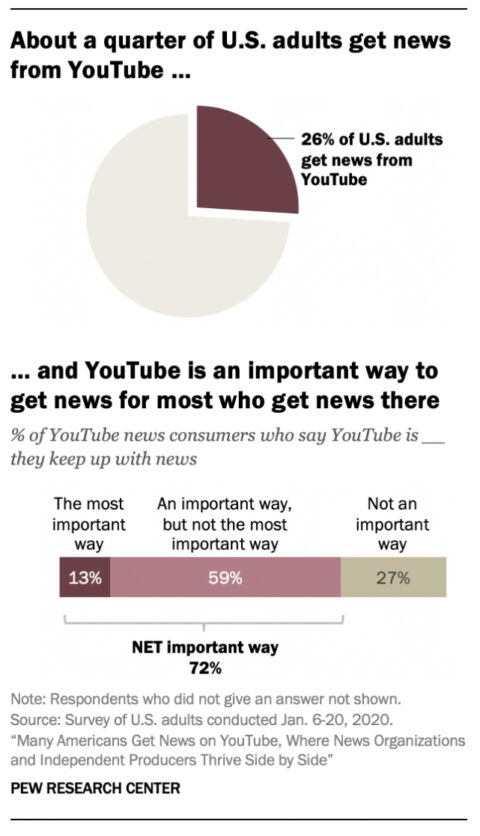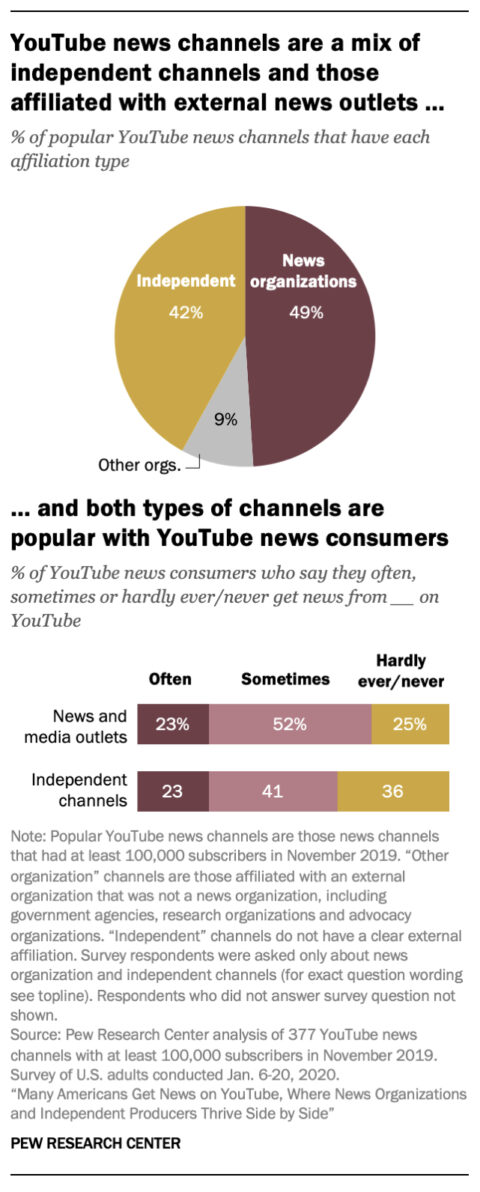28 Sep YouTube Growing As a Source of News for Americans via @MattGSouthern
A Pew Research Center study finds about a quarter of US adults get news from YouTube, including a mix of independent and established organizations.
Of the people who get news from YouTube, 59% say it’s an important way to get news, while 13% say it’s the most important way they get their news.


When it comes to the types of YouTube channels people are consuming news from, it’s a nearly even split between independent journalists (42%) and established news outlets (49%).


The study is further evidence of a shift toward non-traditional outlets as sources of news.
It’s clear this shift started years ago. This is not a sudden change by any means, it’s just now there’s more data coming out to quantify the shift in user behavior.
For example, Reuters published a study this past June in which it discovered Instagram is set to overtake Twitter as a news source.
As marketers, and as users of the web in general, it’s important to be aware of these changes in use patterns.
Instagram never set out to become a source of breaking news, and it’s fair to say the same of YouTube.
Now it’s different. Users’ intent is evolving every time they log in to these platforms.
So let’s catch up with where they’re at and learn more about the evolution of YouTube as a news source.
Why is YouTube growing as a source of news?
To understand why YouTube is growing as a source of news, Pew Research asked survey respondents to explain its appeal in their own words.
Among the responses were access to news outside the mainstream, and the variety of views and opinions available.
Of those who say YouTube is one of their news sources, 51% say they’re looking for commentary and opinions, while 48% say they’re looking for objective reporting.
Personality-driven content with opinionated commentary certainly thrives on YouTube. That’s one thing that has remained constant for as long as the platform has been online.
66% of users who watch news on YouTube say it helps them better understand current events.
So there’s something to be said for using commentary videos as a way to make complex topics easier to understand.
Perhaps that could apply to more than just news content?
Analysis of news content on YouTube
As part of this study, Pew Research conducted a content analysis to discover the types of news videos performing well on YouTube.
Of the 377 most popular YouTube news channels:
- 22% are associated with TV stations (CNN, NBC, CBS, etc.)
- 14% are affiliated with digital-native news outlets (such as BuzzFeed News and Vox).
- 8% are affiliated with print outlets (such as The New York Times and USA Today).
- 9% are affiliated with other types of organizations (such as government entities and advocacy groups).
- 42% are independent channels with no clear affiliation to an external entity.
This puts into perspective the influence independent creators have on YouTube. It’s still a platform where independent voices can be heard.
Whether that’s a good thing or not is up for debate, however, as the content produced by each type of channel varies considerably.
When it comes to news content, independent channels lean toward conspiracy theories while established outlets are more likely to report facts.
That suits the YouTube audience perfectly fine, because just as many users say they’re looking for facts as they are opinions.
What that says about the collective conscious of society is not for me to comment on. I’m just here to report on how people are using YouTube in 2020.
For a deeper analysis, see the full 3-part study here.
Sorry, the comment form is closed at this time.